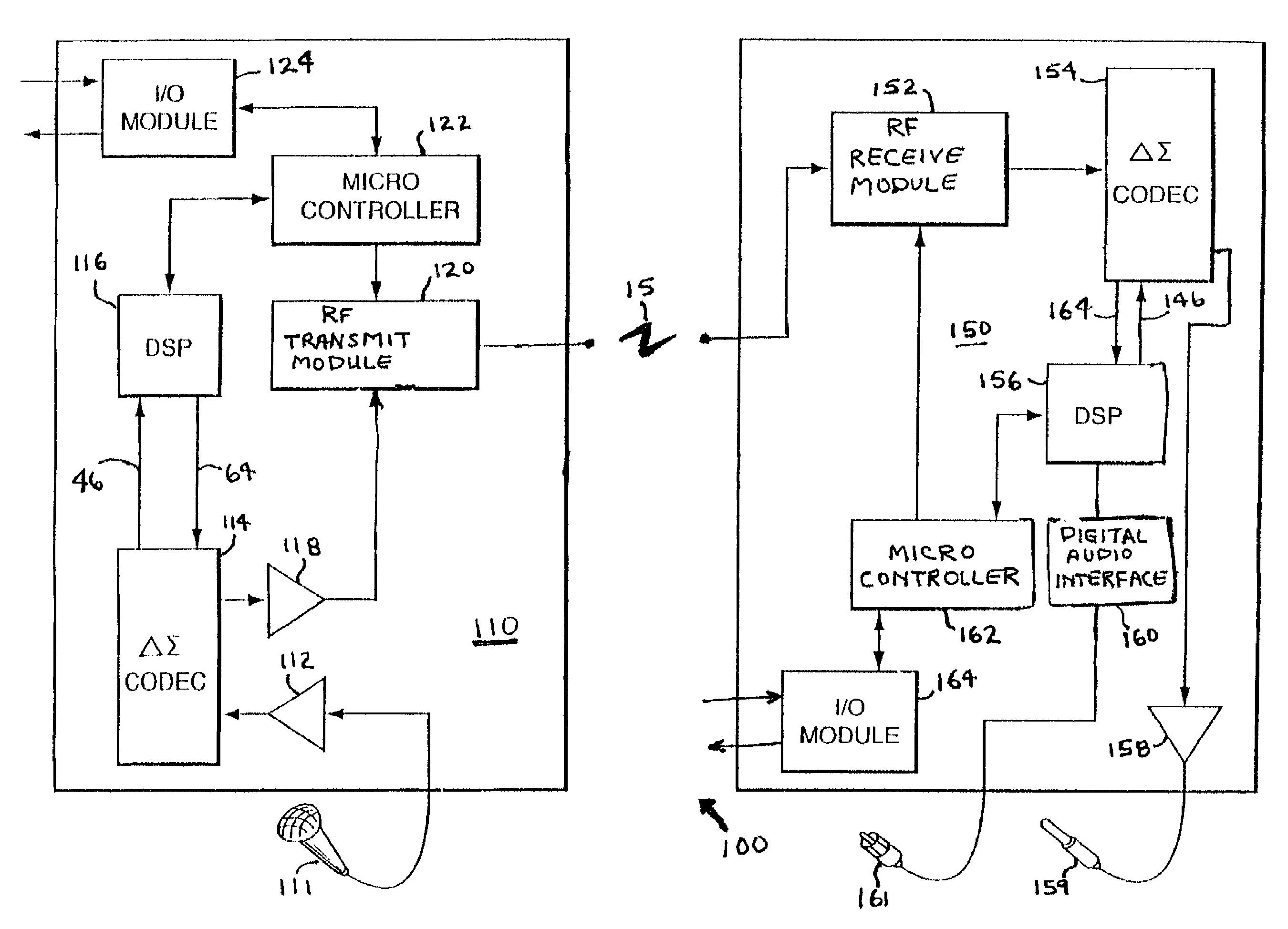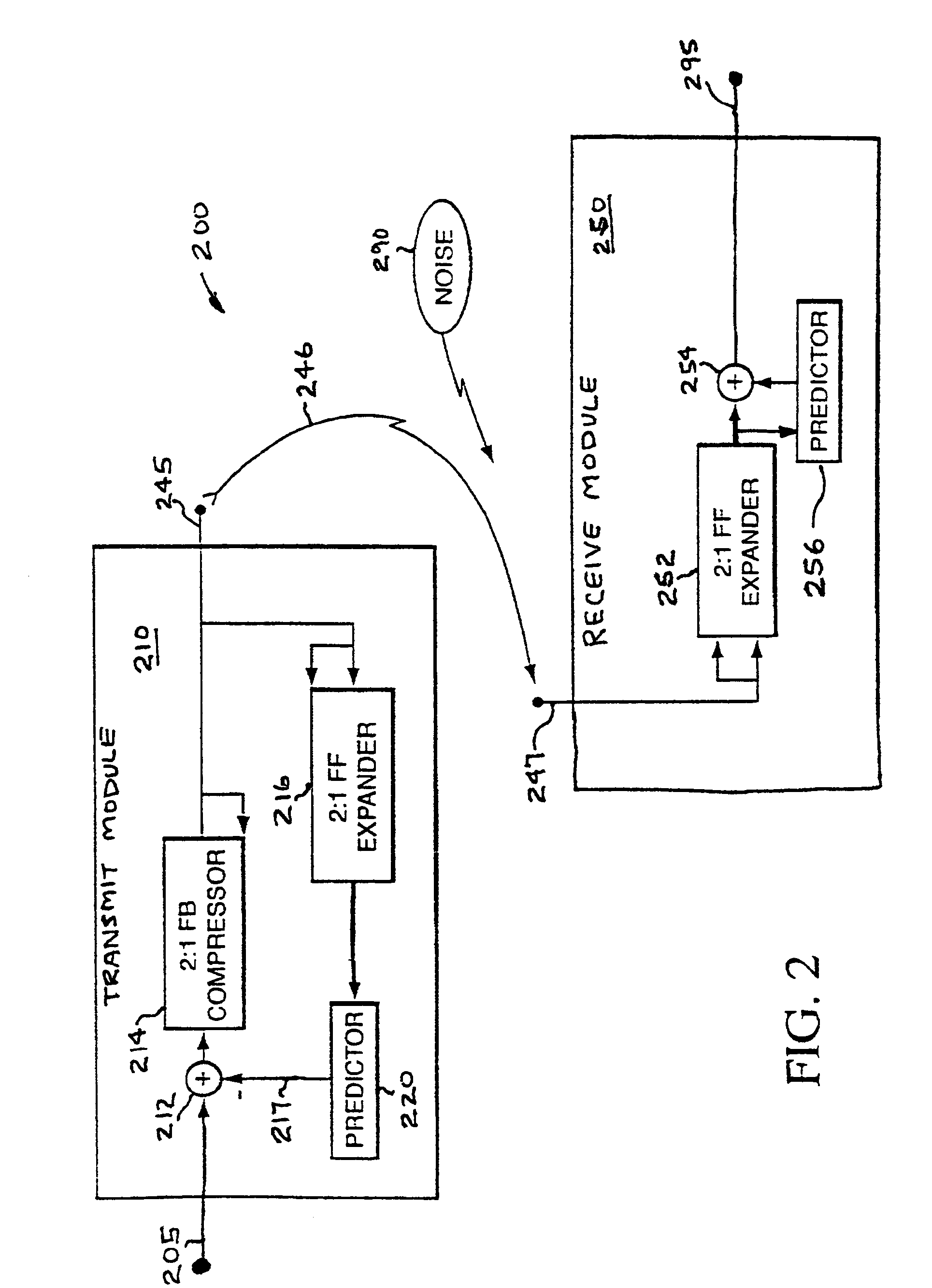Signal-predictive audio transmission system
a technology of audio transmission system and prediction, applied in the field of prediction of audio transmission system, can solve the problems of encoding and decoding delay, degraded audio quality, and reduced data rate, so as to minimize the attenuation of accurate components, minimize the error of prediction, and reduce the noise level in spectral
- Summary
- Abstract
- Description
- Claims
- Application Information
AI Technical Summary
Benefits of technology
Problems solved by technology
Method used
Image
Examples
Embodiment Construction
[0043]A signal-predictive audio transmission system according to various aspects of the present invention provides numerous benefits, including substantial psychoacoustic reduction in perceived noise levels and enhancement of dynamic range, without significant audio degradation of the type conventionally associated with companding. Such a system can be advantageously implemented wherever such benefits are desired. For example, wireless microphone system 100 of FIG. 1 includes a transmitter 110 that receives an audio input signal at a microphone 111 and sends a compressed error signal to a receiver 150, in accordance with various aspects of the invention.
[0044]The error signal that transmitter 110 sends to receiver 150, which travels via field radiation over wireless link 15, is not directly based on the actual audio input signal. (Indeed, it is barely recognizable if listened to directly, in many implementations.) Rather, the error signal is representative of amplitude-compressed de...
PUM
 Login to View More
Login to View More Abstract
Description
Claims
Application Information
 Login to View More
Login to View More - R&D
- Intellectual Property
- Life Sciences
- Materials
- Tech Scout
- Unparalleled Data Quality
- Higher Quality Content
- 60% Fewer Hallucinations
Browse by: Latest US Patents, China's latest patents, Technical Efficacy Thesaurus, Application Domain, Technology Topic, Popular Technical Reports.
© 2025 PatSnap. All rights reserved.Legal|Privacy policy|Modern Slavery Act Transparency Statement|Sitemap|About US| Contact US: help@patsnap.com



